Our content is reader supported, which means when you buy from links you click on, we may earn a commission.
2019 Online Course Creator Industry Report

The very first course creator interview on coursemethod.com went live in August of 2019. It’s only been six months and I’ve already received nearly 75 interviews and counting!
Since I ask each course creator the same questions, I’m pulling out all the data to create detailed case studies. Hopefully, you’ll gain something by reviewing this and even better, have an interest in reading more of the interviews. They are very inspirational.
This case study is a result of all the interviews published in 2019. I published exactly 30 interviews in 2019.
The people I interview have built a successful online course business or digital training company. They offer one course or multiple courses, but the main idea is that they are offering education online for a fee.
The online course creators were chosen fairly randomly, but in the end, this case study is obviously only a small representation of the course creation industry.
It’s still interesting and I think worth taking the time to put together. I haven’t seen anyone else out there with any data on online course businesses.
I hope to interview 100+ online course creators in 2020 so that should yield even more insights. These may be broken down by quarter with the results lined up next to each other by the end of the year.
Although I’m not a statistician, I was a research scientist before starting my own digital training company in 2001 so I am familiar with organizing data. Still, I’m open to suggestions on how I can make this data more meaningful.
Let’s get started with the findings.
Market
Of the 2019 course creators interviewed, a number of different markets were represented:
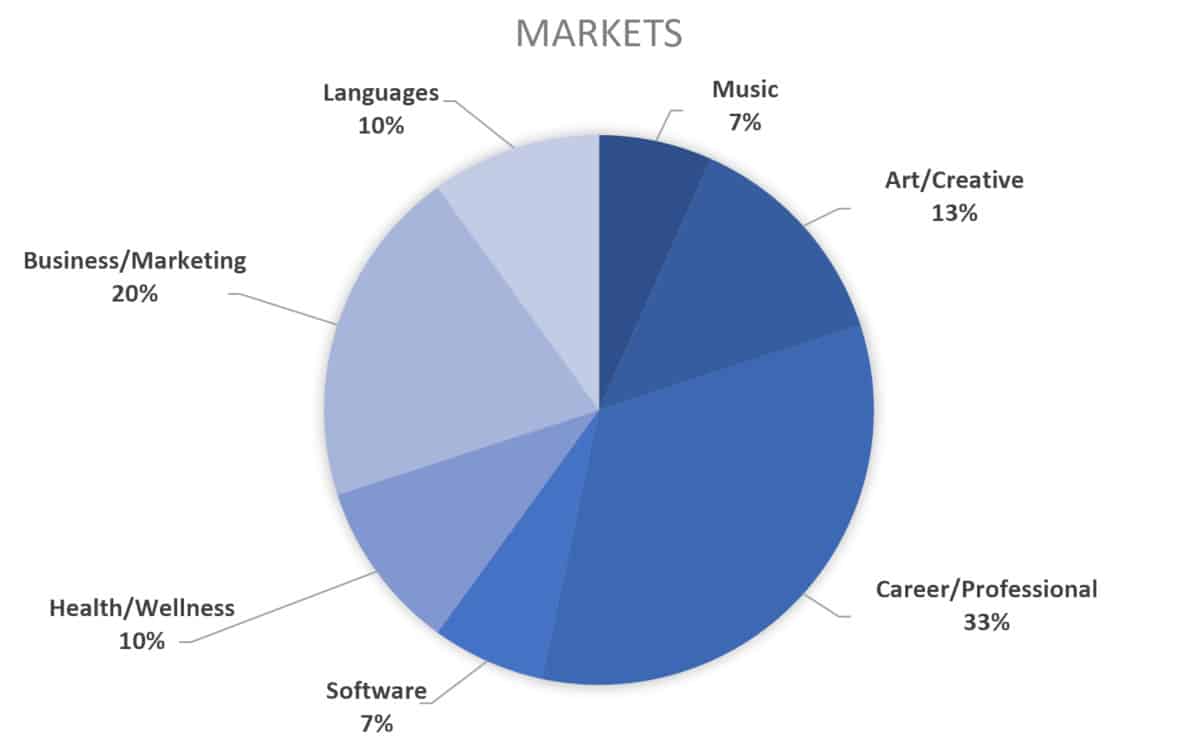
The highest percentage of respondents (33%) were in career/professional industries. These include certifications for professional training, teacher training, and much more.
The business & marketing industries made up 20% of those interviewed. These include sales training, marketing for entrepreneurs, and freelance writing among others.
Surprisingly, the art & creative market came in third at 13%. These included digital courses on calligraphy and other creative endeavors, chalk painting, photo organization, and chef training.
Languages and health & wellness were each represented by 10%. On the language side, those interviewed taught Greek, French, and English speaking courses. Health & wellness were represented by relationship recovery, holistic wellness, and healthy weight loss.
Finally, software and music were each represented by 7%. Software was represented by C# and Excel training. Music included founders providing electric guitar and jazz guitar lessons.
How They Got Into the Market
One question asked in all the interviews covered how they got into the market. Here’s a breakdown of the replies:

The biggest percentage (43%) got into online training because they already had a service-related or coaching business. It makes sense that this would be the highest percentage. For example, Elna Cain offered coaching to struggling freelance writers and decided to offer a digital program so she could train many at once. There were several stories just like this.
This was followed by those who said their previous job lead to digital training (37%). For instance, Resit Gulec worked as a project manager for several years before starting his own business helping others break into the project management field.
Lee Wilson worked for a marriage-coaching company while offering dating coaching on the side. From there, he created his own training company helping people recover their ex.
10% of those interviewed said they created their online training because the information within a topic of interest was sparse. For instance, Brett Lindenberg noted there wasn’t any in-depth information available on starting a food truck business. So he decided to start a blog and podcast around the subject. That turned into online courses.
Type of Training
Most of those interviewed offered courses (73%), followed by those offering memberships (17%), and those offering courses with coaching (10%).
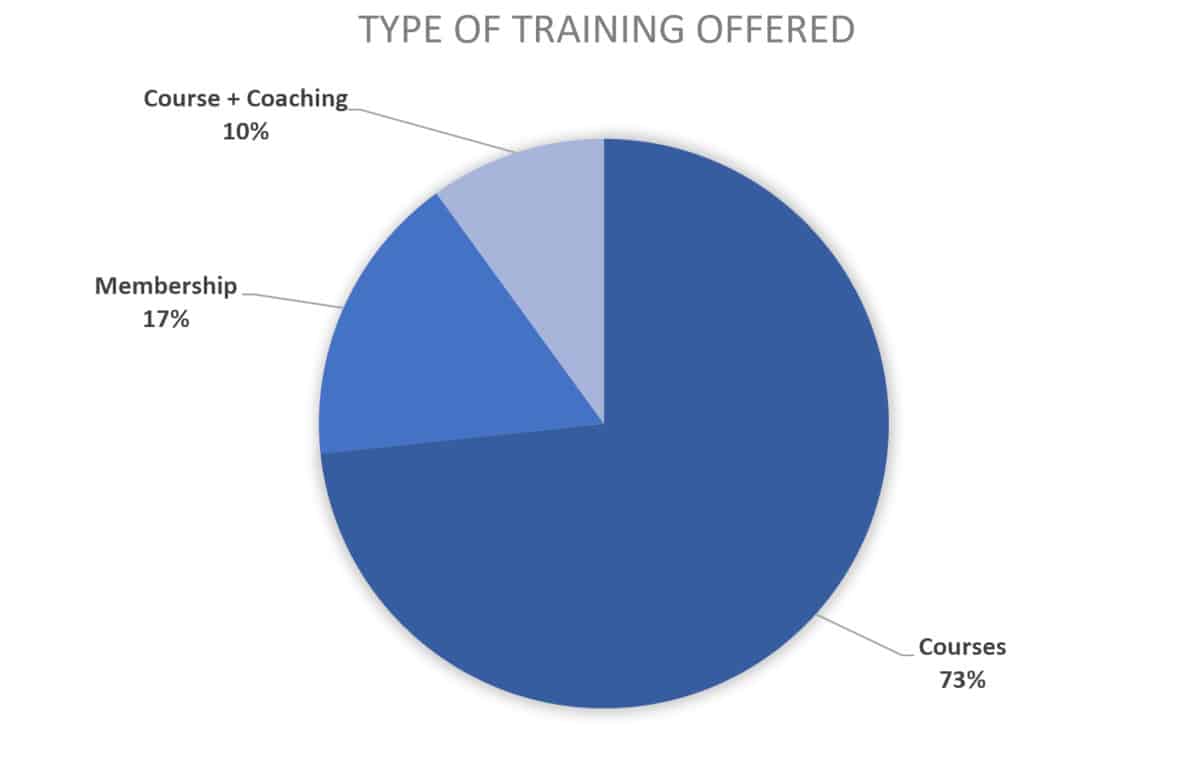
Doubts
When asked if they had any moments of doubt before creating or launching their course, the majority of respondents said yes (57%).
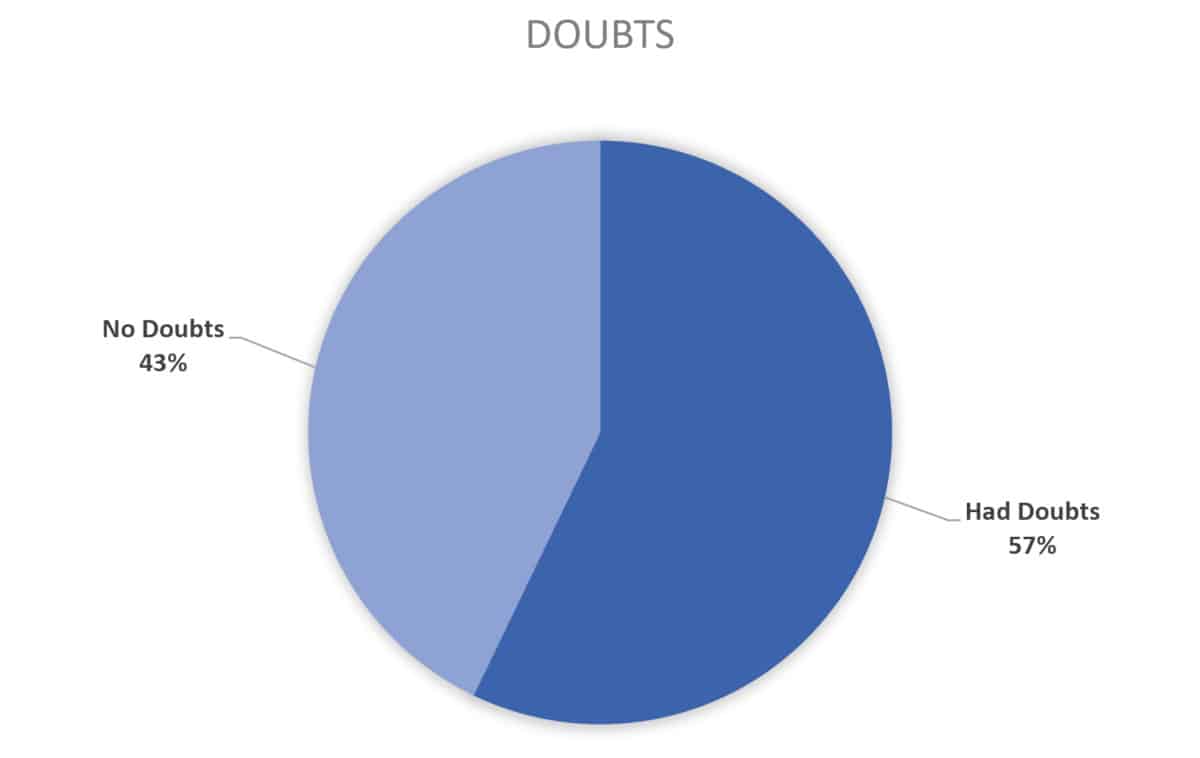
Overcome Doubts
When those that answered “yes” were asked how they overcame their doubts, the majority essentially reported that they started anyway despite those doubts (44%). For example, one course creator outlined the steps need to finish his course and then followed the steps. Another said she just started doing it and felt better about the process as she went along.
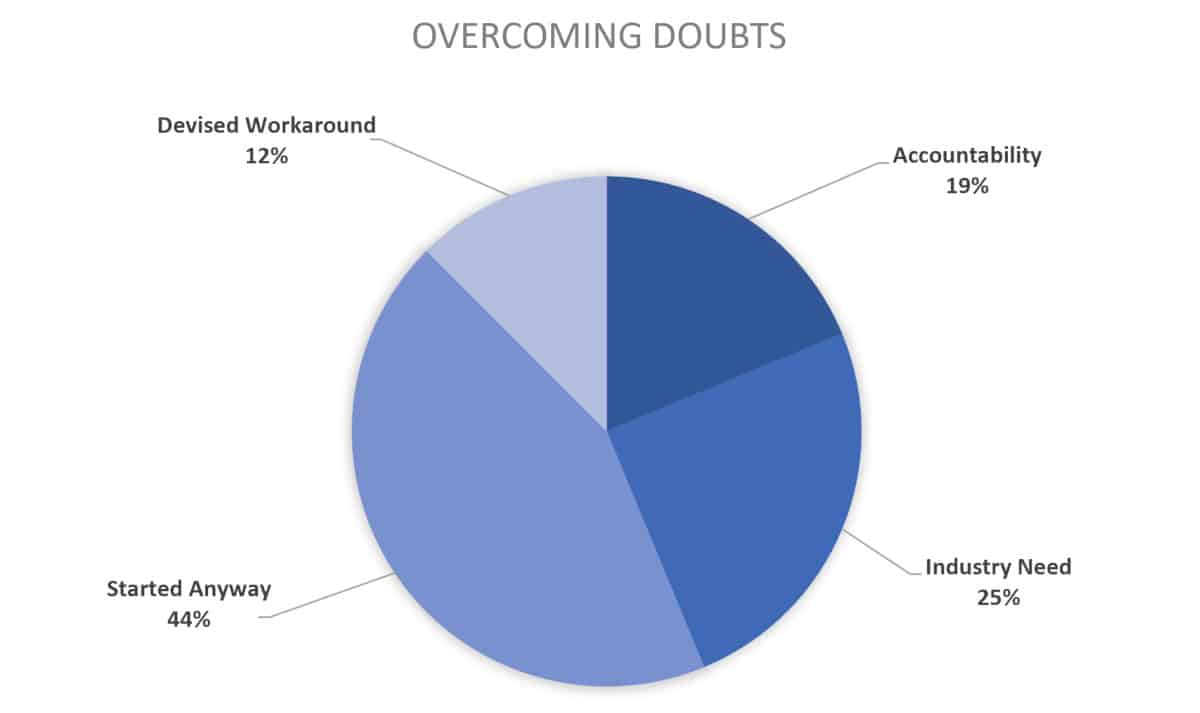
The genuine need of the industry kept 25% of those interviewed on track. For instance, Foster Brusca said he recognized there was a genuine need for good training in his field so he and his partner completed their course to increase the professionalism of the industry.
Accountability with others helped 19% of respondents complete and launch their course. These included masterminds, visualizations, and clear end goals.
Interestingly, 12% of those interviewed said devising a workaround helped them overcome their doubts. For example, Resit struggled with narrating his course due to his accent. So after he struggled with the first version, he hired out the voiceover work for future versions and other courses.
Training Medium
According to the results, 23% of respondents used video only in their training while 77% used multiple mediums.
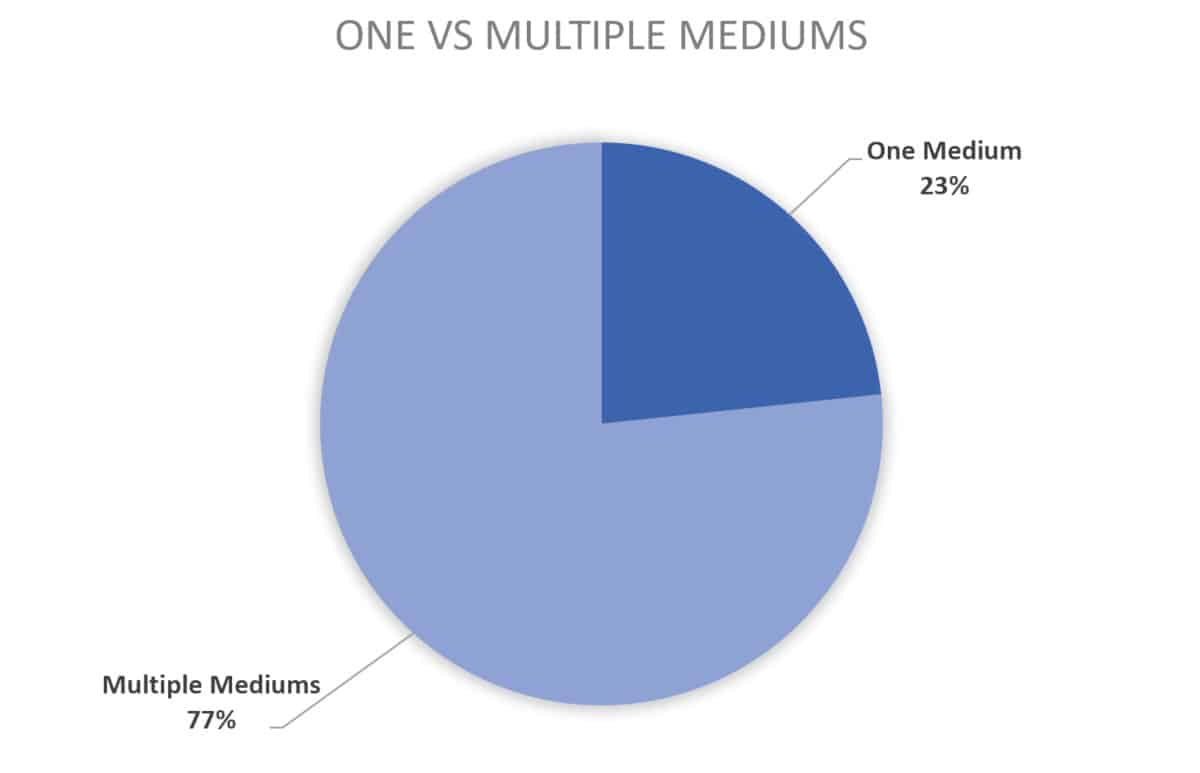
When broken down by medium, video was the most popular medium by far. In fact, 97% of those interviewed used video (either with or without another medium).
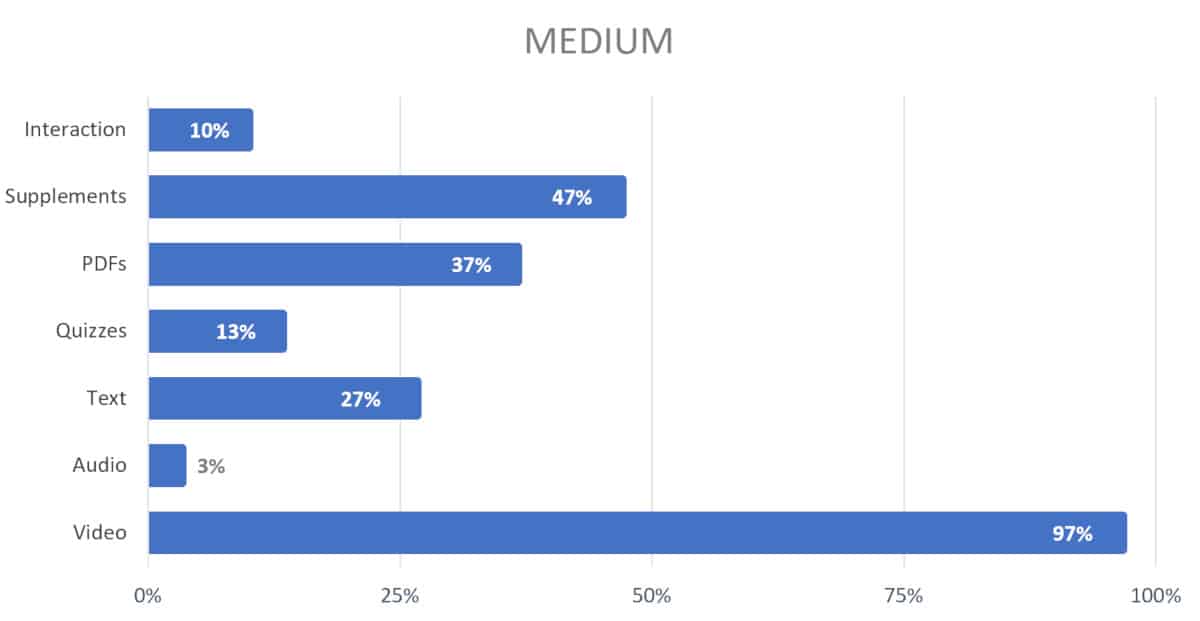
Approximately 47% used supplemental materials like newsletters, photos, example files, backing tracks, final projects, and many other tools in their training.
Thirty-seven percent reported using PDF’s including ebooks, worksheets, and other similar items in their training.
Approximately 27% used text. A few respondents replied that most of their training was in text format with only a few supplemental videos.
Only 13% utilized quizzes, while 10% included live interaction, and 3% included audio files.
Length of Time to Create a Course
So about how long does it take for course creators to finish creating their training?
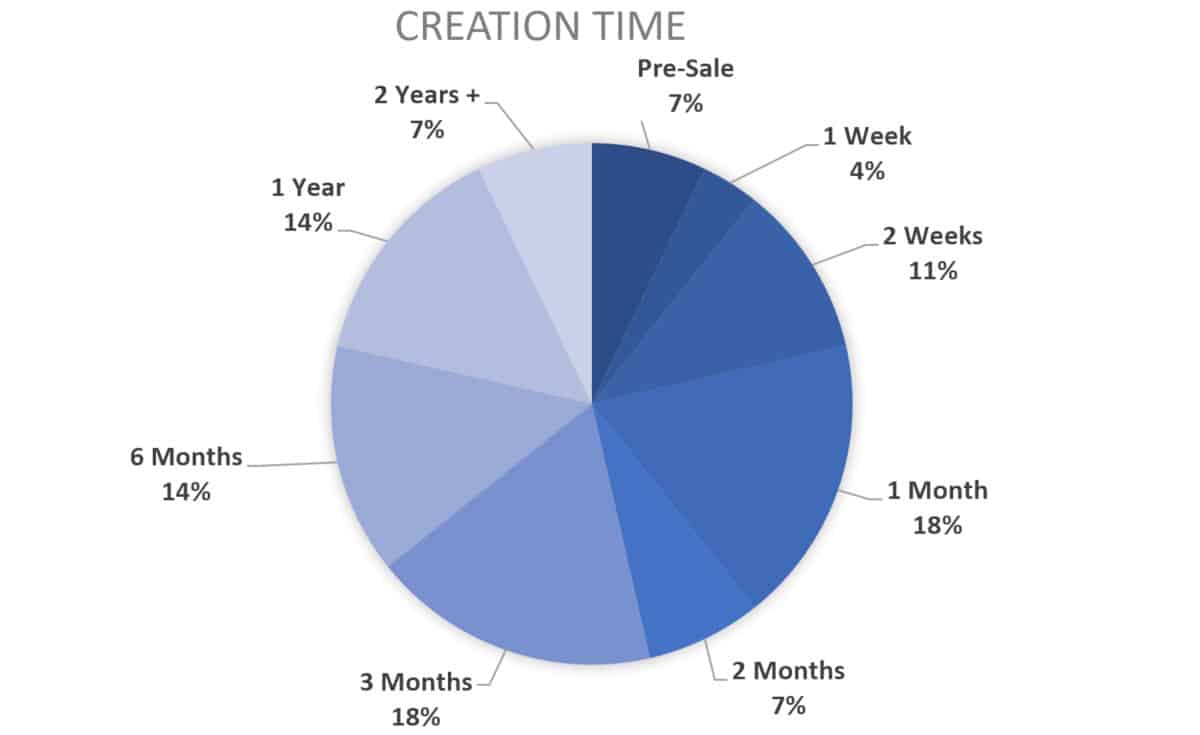
The majority reported they were able to create their course in 1 month (18%) and 3 months (18%). Two months was another popular answer given with 7% of respondents reporting it took 2 months to create their courses.
That’s a total of 43% of course creators spending between 1 and 3 months to create their course.
On the even faster side, 4% of course creators interviewed created their course in a week. Another 11% wrapped up the course creation process in just 2 weeks. And 7% held a pre-sale where they sold their course before finishing it.
That means 22% of the respondents created their course within 2 weeks.
On the flip side, 14% of course creators reported spending 6 months to create their course, 14% took 1 year, and 7% took 2 or more years.
So that’s a total of 35% reporting spending 6 months or longer for their course creation.
Here’s a less involved (but easier to review) chart with the 3 major time periods; 2 weeks or less, 1 to 3 months, or 6 months or more:
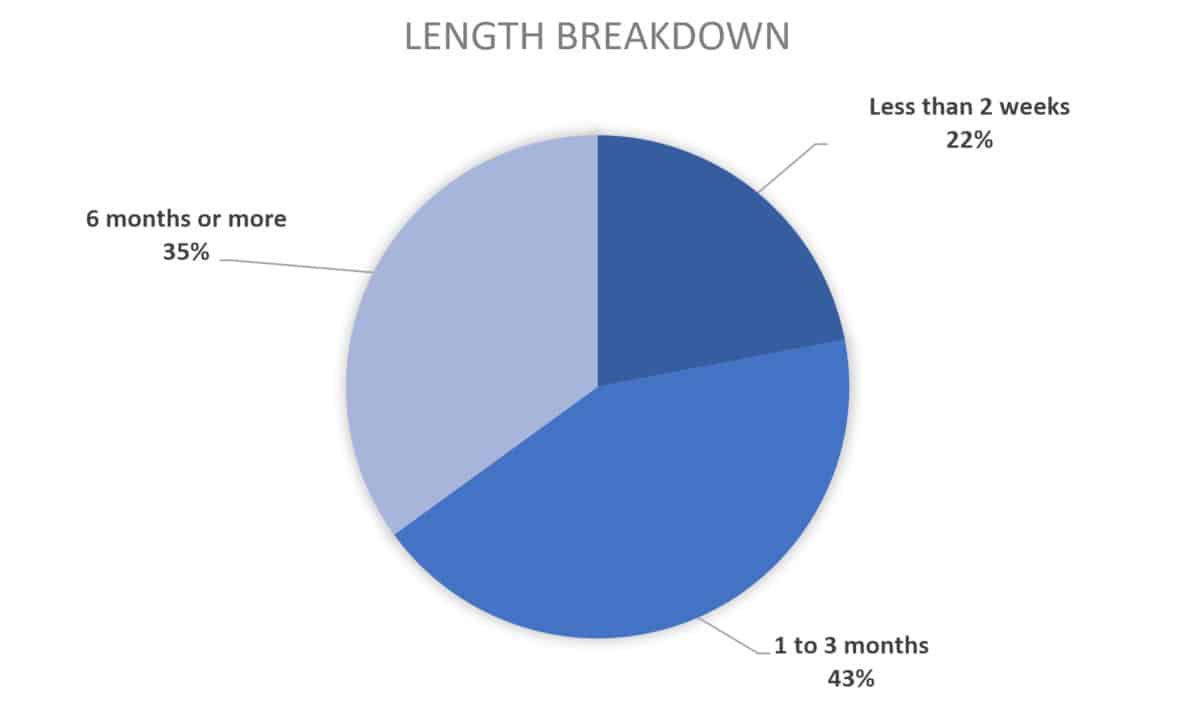
Launch Strategy
Most respondents said they used multiple launch strategies for their launches.
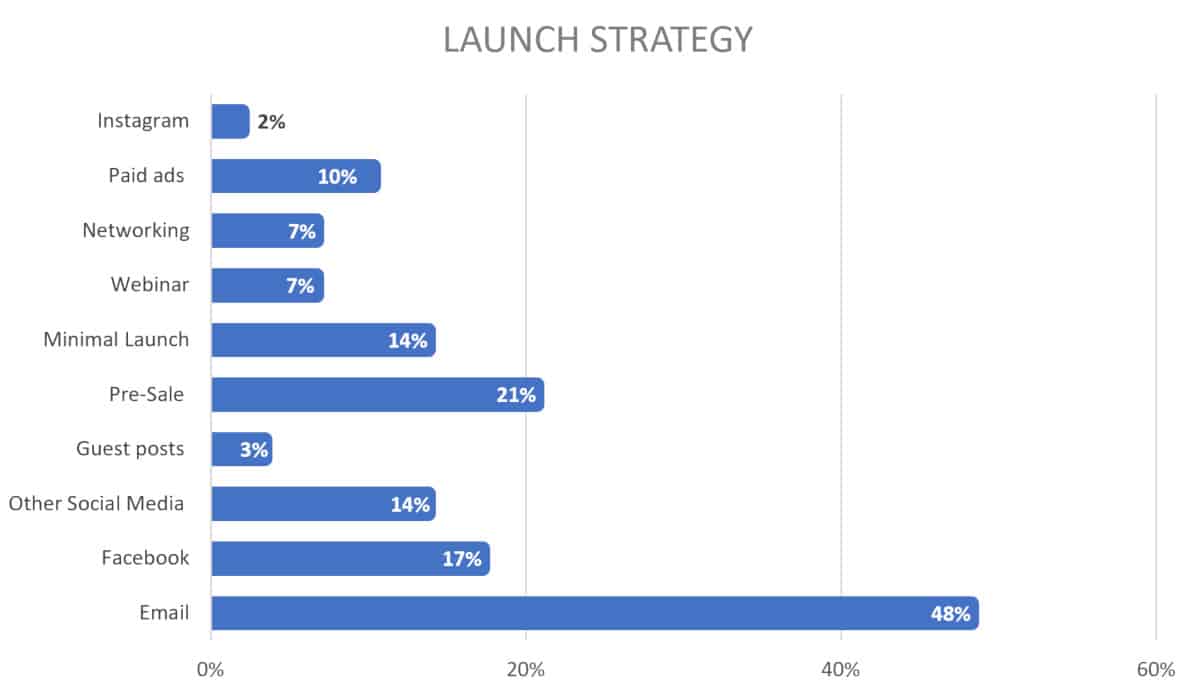
Approximately 48% of those interviewed launched using email.
Another 21% utilized a pre-sale before the course was created. After the pre-sale, they created the course live with those who enrolled.
Approximately 17% used Facebook and 14% used other social media to help launch their course.
Of those interviewed, 14% said they put together a very minimal launch where they didn’t do too much. One course creator said he uploaded his course to an online education platform and started earning money. Another said it was a slow go initially, but after a while, they started earning.
Tne percent of course creators interviewed reported using paid ads. Paid ads included Facebook ads, LinkedIn ads, Google Adwords, and a couple of others.
Another 7% of respondents said they used networking to launch their course. This type of networking was typically done through a live speaking engagement. Another 7% used webinars to launch their course.
Finally, 3% used guest posts and 2% used Instagram for launching their course.
Traffic Strategy
All the course creators interviewed utilized more than one traffic strategy. So each one had multiple methods of generating traffic to their site. Here’s a breakdown:
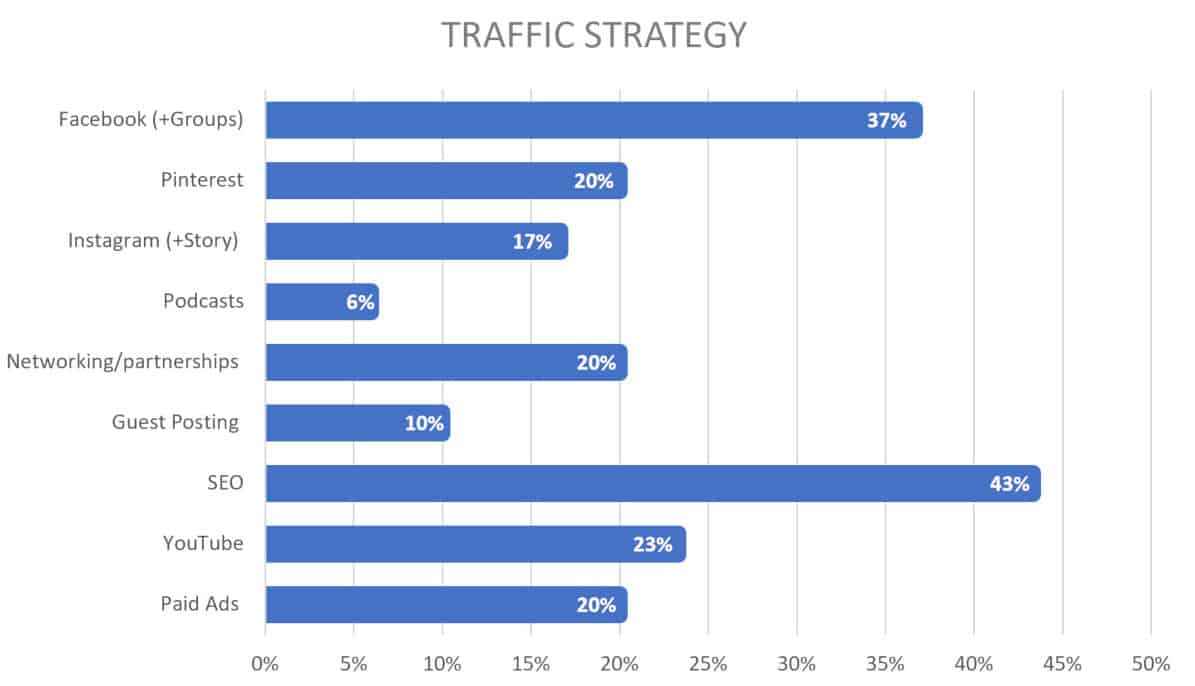
Search engine optimization (SEO) was the most popular traffic strategy as reported by those interviewed. As a note, SEO also includes content marketing. Approximately 43% of course creators interviewed used SEO and content marketing to get traffic to their courses.
Facebook + Facebook Groups came in second with 37% of the respondents using this platform for generating traffic.
The third most popular traffic generation strategy was YouTube at 23%. Nearly a quarter of all respondents reported that they created videos for YouTube and drove traffic from that platform.
From there we had a tie with Pinterest, networking/partnerships, and paid ads each coming in at 20%.
Instagram + Instagram Story was used by 17% of respondents.
Guest posting (10%) and podcasting (6%) came in at the bottom.
Lead Magnet
The respondents were asked whether or not they offered a lead magnet to collect email addresses from their site visitors. The majority, 86%, offered a lead magnet while only 14% did not.

The most popular type of lead magnet reported was a PDF (50%). PDFs included recipe guides, sheet music, or ebooks catering to the industry.
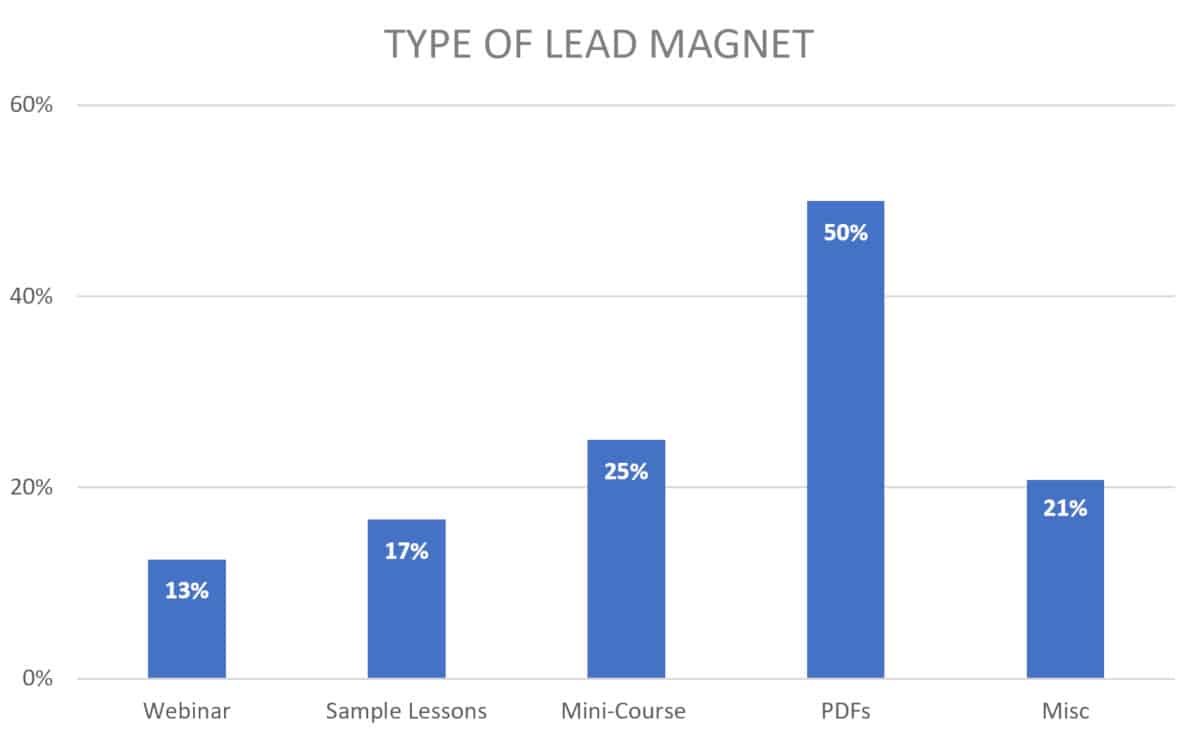
Approximately 25% of course creators offered a mini-course as their lead magnet or sometimes even several small courses for free.
Another 17% offered lessons from their course for free. Often this was 2 or 3 videos that prospects could watch before enrolling in the full paid version of the course.
Approximately 13% offered a webinar while 21% offered miscellaneous lead magnets. This miscellaneous group included access to special Facebook Groups, podcast collections, and other valuable items.
Online Course Platform
Next, is a chart showing the breakdown of the different online course platforms used by the course creators interviewed:
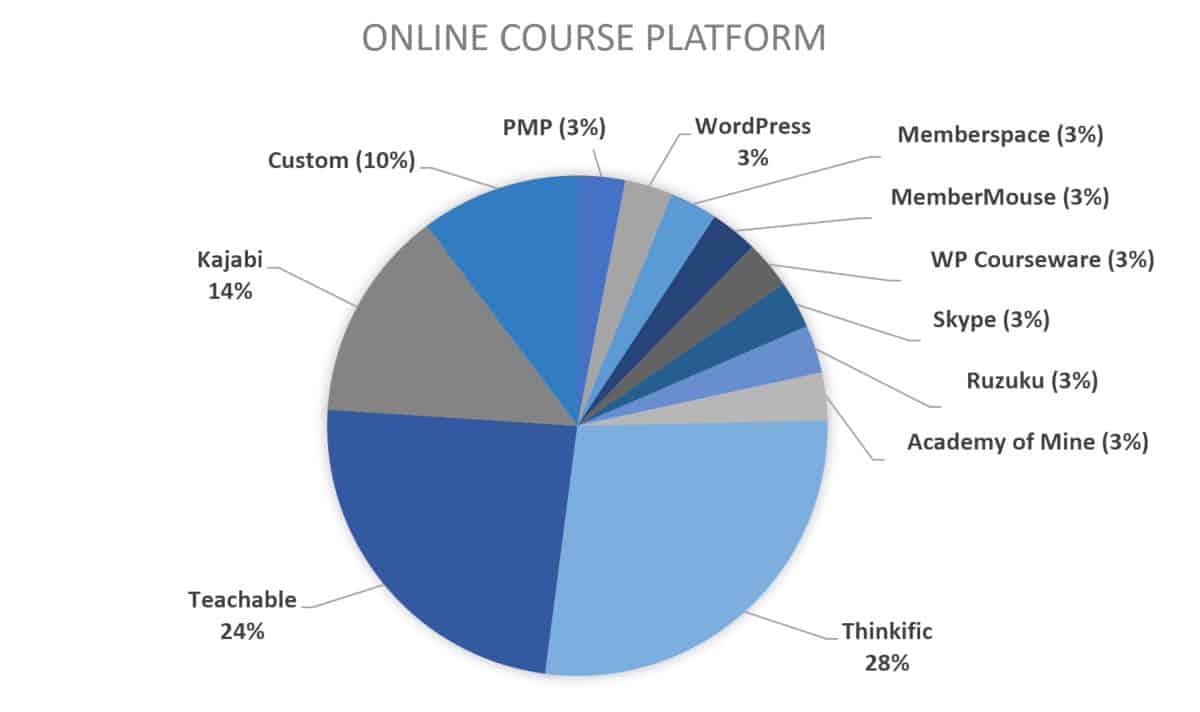
As you can see, 27% of those interviewed used Thinkific while 23% used Teachable. Approximately 13% reported using Kajabi.
The next most popular option was to go with a custom build (10%).
Several platforms were used by just a single course creator. These included Paid Membership Pro, Memberspace, MemberMouse, WP Courseware, Ruzuku, and Academy of Mine.
Two other options used as alternatives to online course platforms included WordPress and Skype.
I hope to get more data on course platforms as I interview more course creators throughout the year.
Missing from Online Course Platform?
Of those interviewed, 63% felt their online course platform lacked a few crucial features.
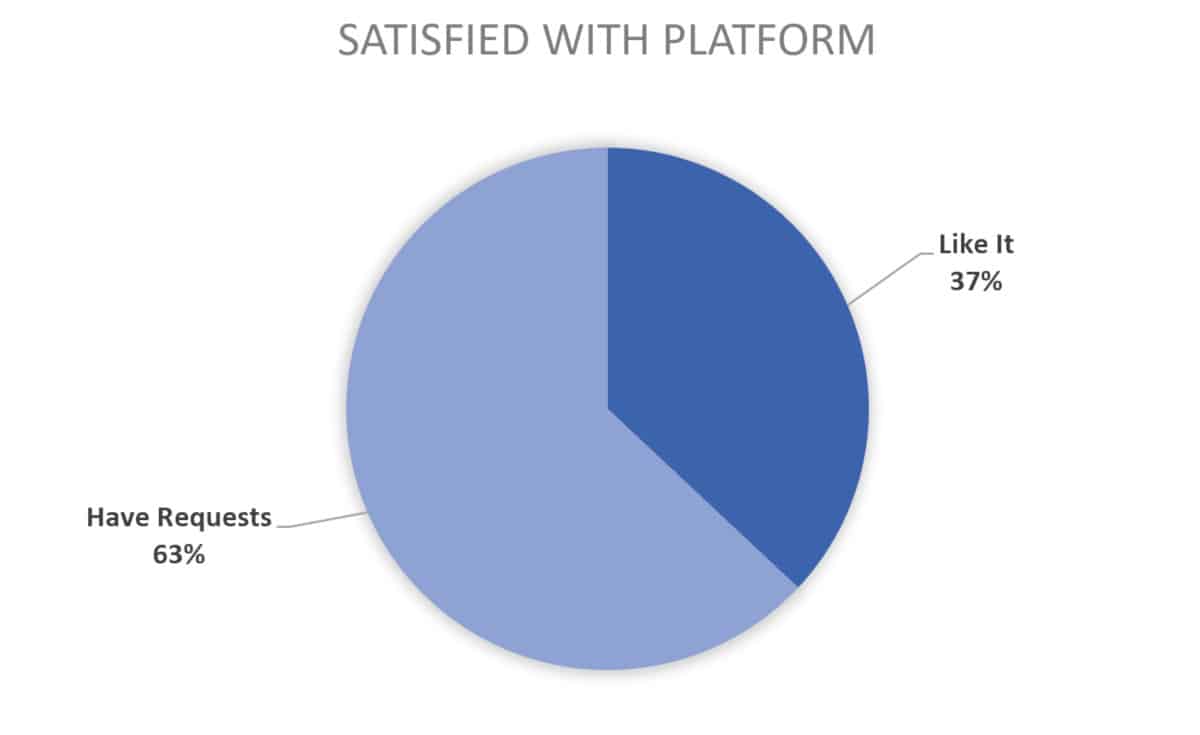
Of those who thought their online course platform was missing a few things, 29% thought the sales pages could use an upgrade. 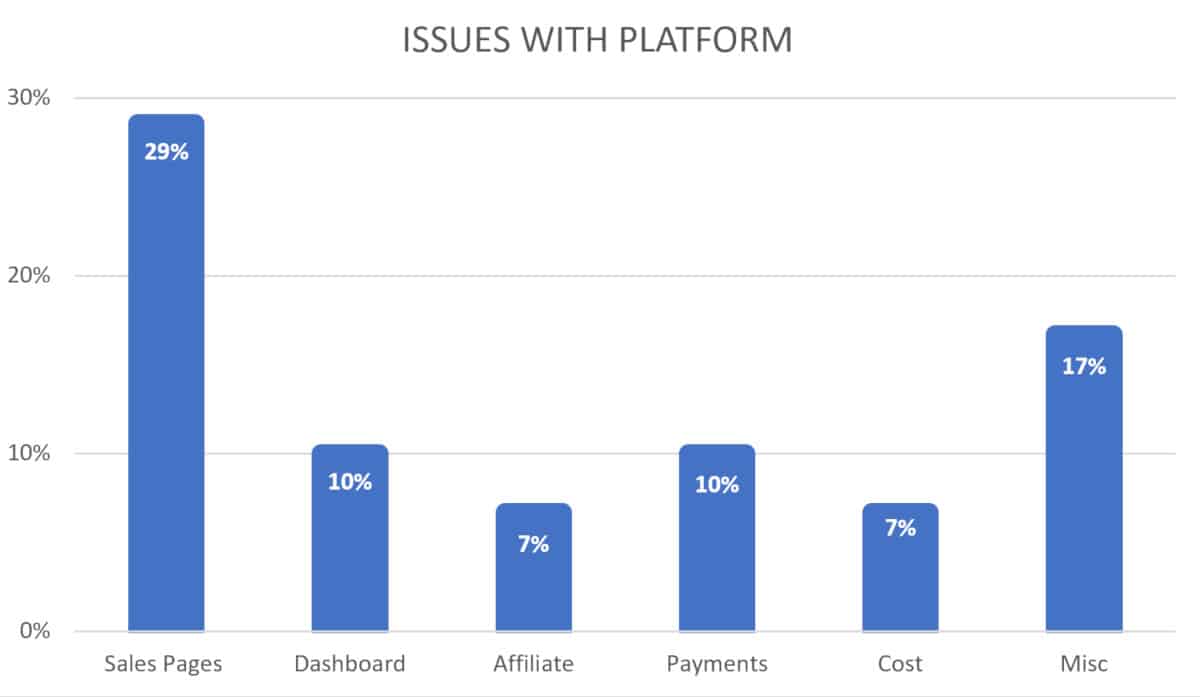
Several others thought the dashboard could be improved (10%) as well as the payment system (10%). And 7% felt the affiliate system needed improvement.
Another 7% took issue with the cost. For example, one course creator wished their platform charged less for paying out instructors.
Other Tools Mentioned
When asked what other tools they used, each respondent answering this question listed from one to up to a 2 dozen tools. I’ve pulled out the most popular tools mentioned here:
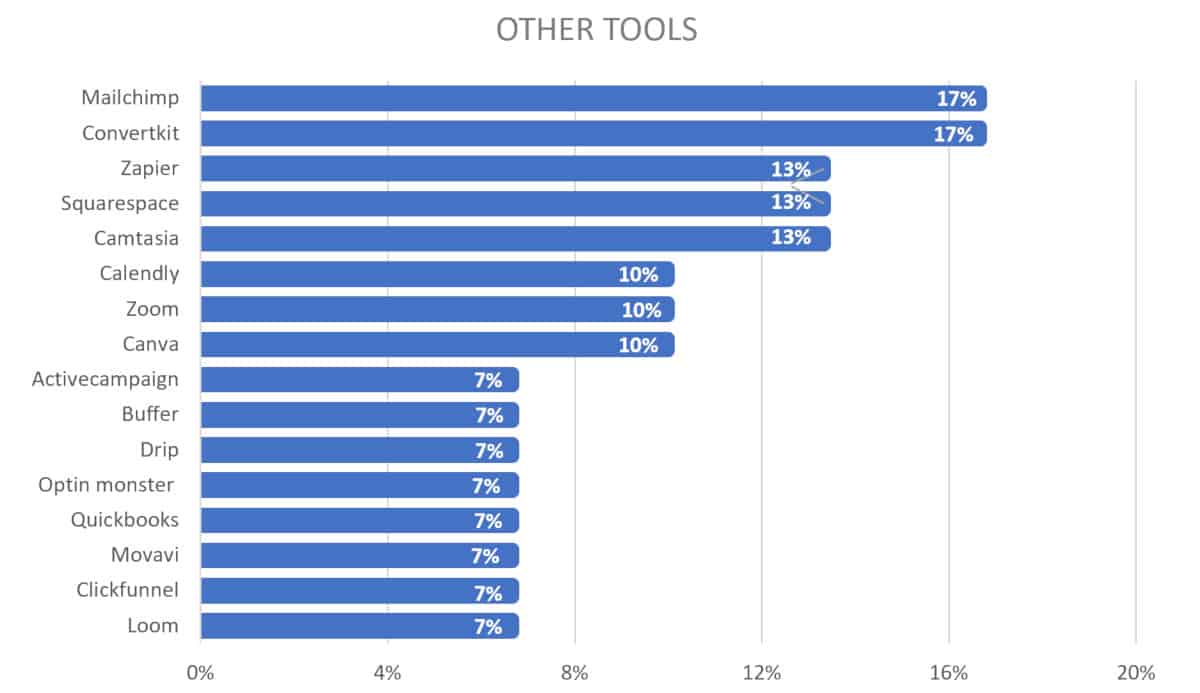
As you can see, Mailchimp and Convertkit lead the pack with 17% of the course creators using one or the other as their email marketing tool. 7% of those interviewed used Activecampaign. 7% of respondents use Drip.
Optin monster helps with lead collection and 7% of respondents reported using it. Clickfunnels (7%) offers some lead generation features in addition to sales page creation. Squarespace helps business owners create sales pages and other web pages. 13% of respondents mentioned using Squarespace.
13% of course creators interviewed mentioned Zapier, an integration tool.
Respondents mentioned several video creation tools. These included Camtasia (13%), Movavi, Loom (7%), and Zoom (10%).
Approximately 10% of course creators used Calendly which is a scheduling tool. Another 10% mentioned Canva, an image creation tool.
Seven percent of the course creators interviewed used Buffer while another 7% reported using Quickbooks, an accounting tool.
A lot of other tools received mention only one time by the course creators.
These included Aweber, Deadline Funnel, Woo-Commerce, Tailwind, SEMrush, Trello, Asana, Powtoons, Hootsuite, Hubspot, Basecamp, and many more.
Revenue
I always try to uncover the approximate revenue numbers from each course creator I interview. Although it’s definitely not the only measure of success, it allows us to get a sense of their success fairly quickly. While it’s not a requirement for publication, a lot of the course creators interviewed in 2019 shared their revenues.
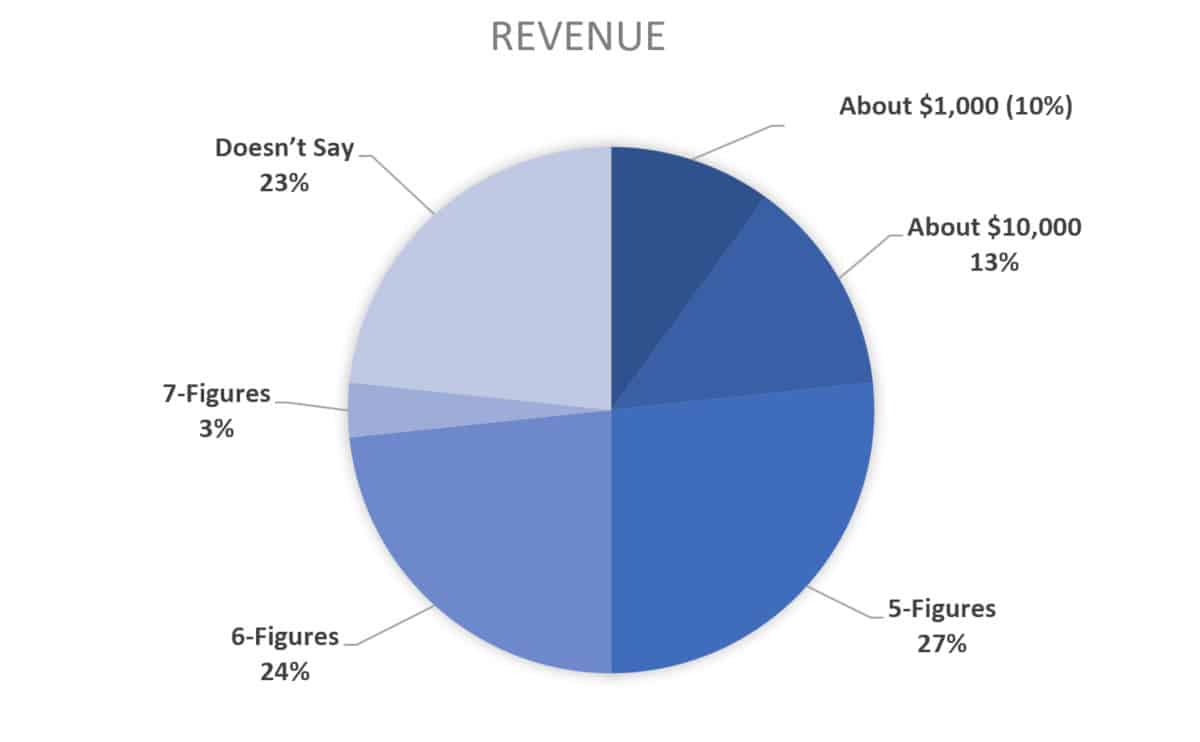
Approximately 27% of those interviewed were in the 5-figure per year bracket. Possibly many of the respondents put into this category earned much more than this. Some only shared how much they earned per launch by saying they had 5-figure launches. So it’s difficult to determine if they should fit in the 5-figure per year range or above.
Of those interviewed, 24% fit into the 6-figure per year bracket while 13% reported earning right around $10,000/year or above.
I set out to interview successful course creators and it seems the ones I’m choosing are indeed successful, at least financially.
Course creators within the 5-figure and 6-figure per year range totaled up to 64% of all those interviewed. Another 3% were in the 7-figure range. So 67% of the course creators interviewed were earning 5-figures and above from their courses.
Approximately 10% of respondents reported earning $1,000 per year earnings span. Many of these course creators are in the up and coming category. They’re just getting started, but we can learn a lot from them even at these early stages.
Twenty-three percent of those interviewed weren’t willing to share their revenue. I do know many of them were earning 6-figures a year or more, but I left them out of the calculations since they did not want to officially share their revenues.
Conclusion
That wraps up the first-ever course creator industry report!
I’ve learned a ton from these interviews despite offering training in the test prep industry since 2001. I’d be the first to admit that no one knows it all.
These interviews provide a lot of inspiration and are a great learning opportunity for anyone.
I want to genuinely thank all the course creators who have taken their time to share their stories with us. It is much appreciated and helps all of us get a solid blueprint for success.